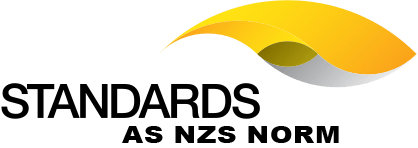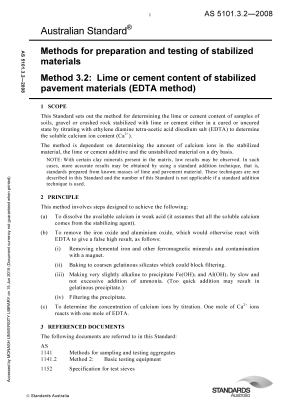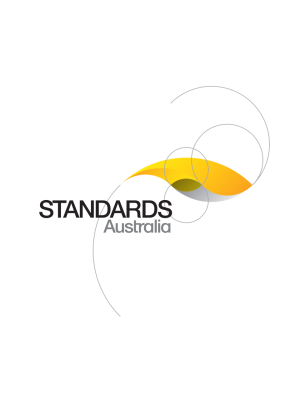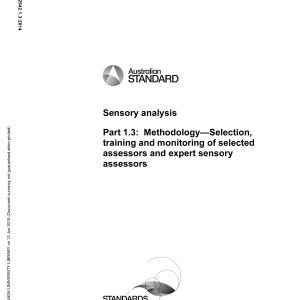🔍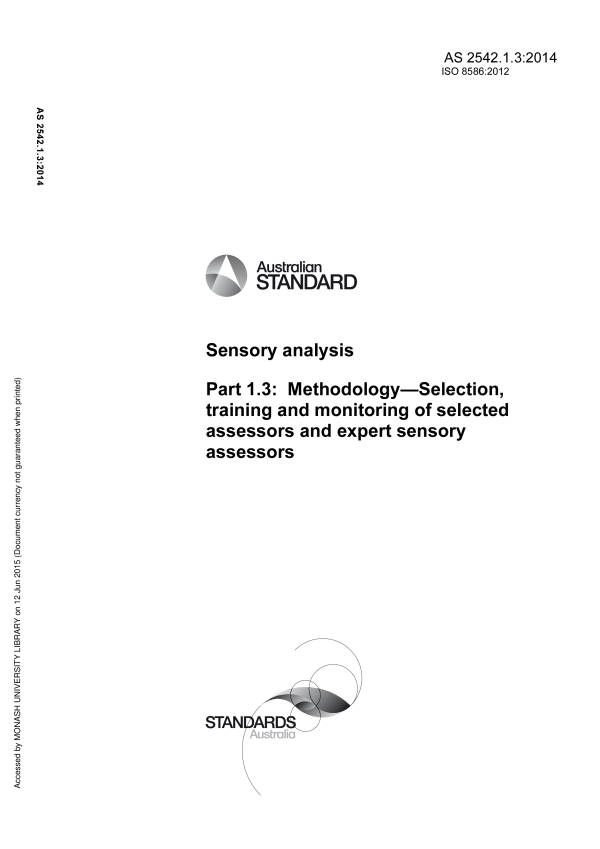

Purchase the full subscription package now and enjoy a 40% discount, along with free updates for future editions.
AS 2542.1.3:2014
$125.14
Sensory analysis, Part 1.3: Methodology – Selection, training and monitoring of selected assessors and expert sensory assessors
Adopts ISO 8586:2012 to provide guidelines for the selection, training and monitoring of assessors participating in sensory analysis.
Table of contents
Header
About this publication
Preface
Introduction
1 Scope
2 Normative references
3 Terms and definitions
4 Selection of assessors
4.1 General
4.2 Recruitment, preliminary screening and initiation
4.2.1 General
4.2.2 Recruitment
4.2.3 Types of recruitment
4.2.3.1 General
4.2.3.2 Internal recruitment
4.2.3.3 External recruitment
4.2.3.4 Mixed panel
4.2.4 Advantages and disadvantages of internal and external recruitment
4.2.4.1 General
4.2.4.2 Internal recruitment
4.2.4.2.1 Advantages
4.2.4.2.2 Disadvantages
4.2.4.3 External recruitment
4.2.4.3.1 Advantages
4.2.4.3.2 Disadvantages
4.2.5 Number of persons to be selected
4.3 Background information and preselection
4.3.1 General
4.3.2 General criteria
4.3.2.1 Availability
4.3.2.2 Attitudes to foods
4.3.2.3 Knowledge and aptitude
4.3.2.4 Ability to communicate
4.3.2.5 Ability to describe
4.3.3 Health criteria
4.3.4 Psychological criteria
4.3.4.1 Interest and motivation
4.3.4.2 Sense of responsibility and power of concentration
4.3.4.3 Ability to judge
4.3.4.4 Willingness to co-operate
4.3.5 Other factors
4.4 Screening
4.4.1 General
4.4.2 Types of screening test
4.4.3 Colour vision
4.4.3.1 General
4.4.3.2 Reagents and materials
4.4.3.2.1
4.4.3.2.2
4.4.3.2.3
4.4.3.2.4
4.4.3.3 Preparation of stock solutions and mixture
4.4.3.4 Preparation of test solutions
4.4.3.5 Procedure
4.4.3.6 Minimum requirements
4.4.4 Ageusia and anosmia
5 Training of assessors
5.1 Principle
5.2 General
5.3 Assessment procedure
5.4 Training of colour, taste, odour and texture
5.4.1 Tests for detection of a stimulus
5.4.2 Tests for discrimination between levels of intensity of a stimulus
5.4.3 Descriptive ability
5.4.4 Odour description test
5.4.5 Texture description test
5.4.6 Recognition of differences in texture
5.4.6.1
5.4.6.2
5.5 Training in detection and recognition of special tastes and odours
5.6 Training in the use of scales
5.7 Training in the development and use of descriptors (profiles)
5.8 Practice
5.9 Specific product training
5.9.1 Difference assessment
5.9.2 Descriptive assessment
6 Final choice of panels for particular methods
6.1 Principle
6.2 Difference assessments
6.3 Ranking assessment
6.4 Rating and scoring
6.5 Qualitative descriptive analysis
6.6 Quantitative descriptive analysis
6.6.1
6.6.2
6.6.3
6.7 Assessors for particular assessments
7 Training of experts
7.1 General
7.2 Sensory memory
7.3 Semantic and metric learning of sensory descriptors
7.4 Building up a thesaurus of descriptors
7.5 Training on assessment conditions
8 Monitoring and testing of performance of selected assessors and expert sensory assessors
8.1 Objectives
8.2 Principle
8.3 Analysis of the results
8.3.1 General
8.3.2 Assessment of the performance of the group as a whole
8.3.3 Assessment of the individual performance
9 Management and follow-up of the group
9.1 Motivation
9.2 Maintaining of skills
9.3 Renewal
9.4 Retraining
Annex A
Annex B
Annex C
Bibliography
Cited references in this standard
Please select a variation to view its description.
| Published | 17/12/2014 |
|---|---|
| Pages | 28 |
Please select a variation to view its pdf.
